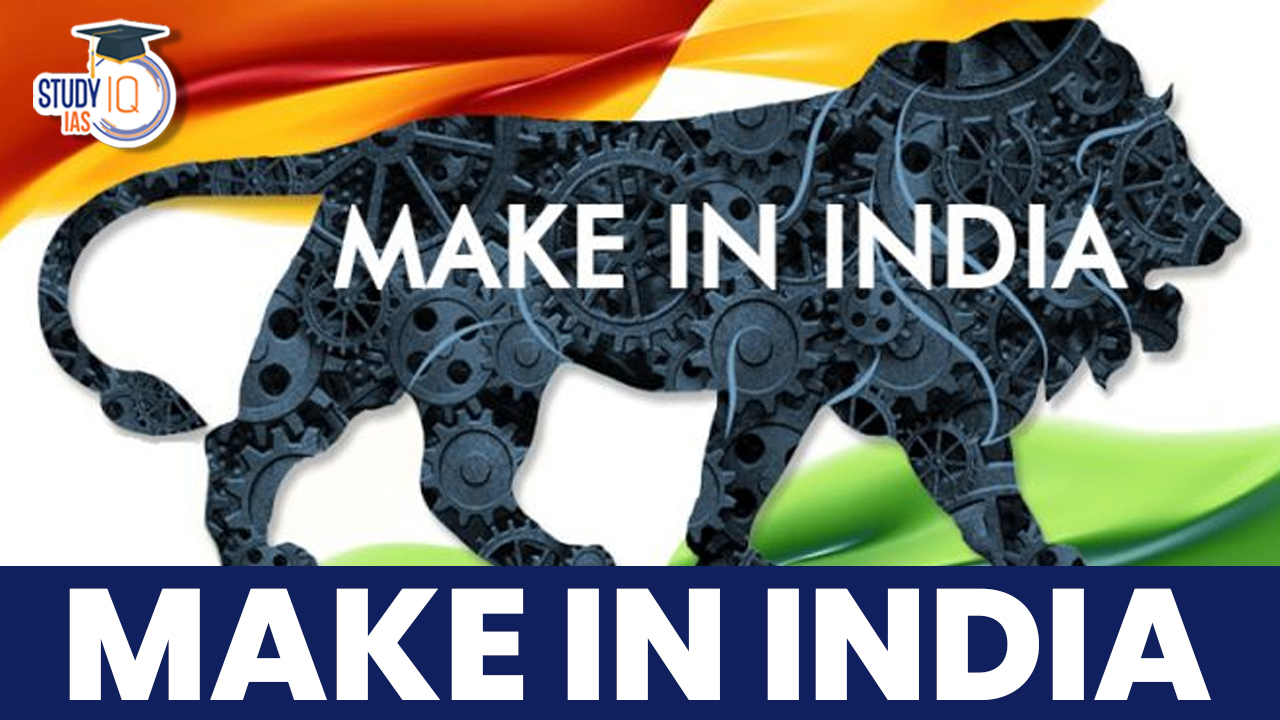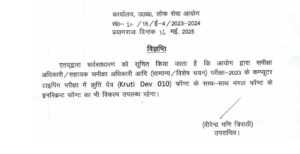Table of Contents
Launched by Prime Minister Narendra Modi on September 25, 2014, the Make in India initiative aims to transform India into a global manufacturing hub. The program seeks to encourage both multinational and domestic companies to manufacture their products in India, thereby enhancing the country’s industrial output and creating jobs. The initiative reflects a significant shift in policy aimed at improving India’s manufacturing sector’s contribution to the Gross Domestic Product (GDP) and employment.
Make in India
In the global landscape of economic development and industrial growth, certain initiatives stand out for their transformative potential. “Make in India” is undeniably one such initiative that has captured the attention of the world. It’s not just a slogan, but a comprehensive call to action that seeks to reshape India’s manufacturing sector, stimulate innovation, and position the nation as a hub for production, investment, and technological advancements. This initiative, launched by the Indian government, has ignited discussions and debates on various fronts, presenting a vision that goes beyond borders and envisions a self-reliant India making significant strides in the world of manufacturing and trade.
Read about: Ek Bharat Shreshtha Bharat
Make in India Initiative
The “Make in India” initiative, launched by the Government of India in September 2014, is a transformative campaign aimed at bolstering the country’s manufacturing sector. This ambitious program seeks to promote innovation, attract foreign investment, foster job creation, and enhance the overall ease of doing business within the country. The initiative encourages both domestic and international companies to invest in manufacturing units across various sectors, thereby contributing to India’s economic growth and development. With a focus on building a robust manufacturing ecosystem, improving infrastructure, and simplifying regulatory procedures, the “Make in India” initiative aspires to elevate India’s status on the global industrial map, while fostering the creation of quality products and skilled job opportunities.
Read about: Har Ghar Tiranga Campaign
Aims of Make in India
The Make in India initiative is founded on several core objectives:
- Boosting Manufacturing Sector: The primary aim is to increase the share of manufacturing in India’s GDP from 16% to 25% by 2025.
- Job Creation: It aims to create 100 million new jobs in the manufacturing sector by enhancing skill development and entrepreneurship.
- Attracting Foreign Direct Investment (FDI): The initiative seeks to make India a global manufacturing hub by simplifying regulations and promoting FDI in various sectors, including defense, railways, and insurance.
- Enhancing Innovation and R&D: Encouraging innovation and research and development to enhance product quality and competitiveness.
- Developing Infrastructure: Building state-of-the-art infrastructure to support industrial growth, including transportation and logistics.
Make in India Sectors
The “Make in India” initiative covers a wide range of sectors, each with its unique potential for growth, investment, and job creation. Some of the key sectors prioritized under the initiative include:
| Sectors | Focus and Objectives |
| Automobiles | Production of vehicles, components, and electric vehicles (EVs). |
| Electronics | Boosting domestic electronics manufacturing, including mobile phones. |
| Textiles and Garments | Enhancing textile manufacturing and promoting sustainable practices. |
| Aerospace and Defense | Encouraging the production of aircraft, defense equipment, and space tech. |
| Pharmaceuticals | Fostering pharmaceutical manufacturing, including generic drugs and APIs. |
| Renewable Energy | Manufacturing solar panels, wind turbines, and renewable energy equipment. |
| Chemicals and Petrochemicals | Emphasis on producing chemicals, petrochemicals, and specialty chemicals. |
| Biotechnology | Promoting biotech manufacturing for pharma, medical devices, and research. |
| Food Processing | Increasing value addition in processed foods and agri-products. |
| Infrastructure and Construction | Construction materials, machinery, and equipment for urbanization. |
| IT and Software | Promoting software development and electronics manufacturing. |
| Chemicals and Fertilizers | Encouraging production of fertilizers, agrochemicals, and specialty chem. |
| Mining and Minerals | Value addition in mining and responsible resource utilization. |
| Healthcare and Medical Devices | Manufacturing medical devices and diagnostic tools. |
| Automotive Components | Production of components for the automotive sector. |
Read about: Meri Mati Mera Desh Campaign
Features of Make in India
The Make in India initiative is built on four primary pillars, which are crucial for fostering a conducive environment for manufacturing:
- New Processes: The initiative emphasizes the ease of doing business by reducing red tape and simplifying regulations. The government is focused on de-licensing and de-regulating industries, allowing businesses to operate with fewer restrictions.
- New Infrastructure: Infrastructure development is critical to support industrial growth. The government plans to develop industrial corridors and smart cities equipped with modern facilities, including high-speed communication and integrated logistics.
- New Sectors: The initiative identifies 25 key sectors for development, including automobiles, textiles, electronics, defense, and pharmaceuticals. Information about these sectors is shared through an interactive web portal and brochures.
- New Mindset: Aiming to shift the perception of government from a regulator to a facilitator, the initiative encourages collaboration between the government and the industry. This includes public-private partnerships to enhance economic growth.
Make in India Success
The “Make in India” initiative launched in 2014 aimed to boost manufacturing in India and attract both domestic and foreign investment. While it has shown progress in various sectors, assessing its success involves considering several factors and data points:
- Ease of Doing Business: India’s efforts to improve its ease of doing business rankings have been recognized. In the World Bank’s “Ease of Doing Business” report, India’s ranking improved from 142 in 2014 to 63 in 2019. This indicates the government’s commitment to creating a more business-friendly environment, which is essential for manufacturing growth.
- Foreign Direct Investment (FDI): The “Make in India” initiative aimed to attract foreign investment. According to DPIIT data, from April 2014 to March 2021, India received a total FDI inflow of approximately $410 billion. FDI is crucial for technology transfer, job creation, and expanding manufacturing capabilities.
- Automobile Manufacturing: India has become a major automotive manufacturing hub. The Indian automotive industry is the fourth-largest in the world by volume and seventh-largest by revenue. The sector contributes significantly to India’s manufacturing GDP and exports.
- Electronics Manufacturing: The electronics manufacturing sector has witnessed growth with several mobile phone and component manufacturing units being set up in India. According to MeitY data, in 2020, India produced over 300 million mobile phones, making it the second-largest producer globally.
- Renewable Energy: India’s solar manufacturing capacity has increased significantly. According to MNRE data, India became the second-largest solar energy capacity installer globally, reaching 40 GW of installed solar capacity in 2021.
- Pharmaceuticals: The pharmaceutical sector remains a major contributor to India’s manufacturing economy. India is one of the world’s largest producers of generic drugs and vaccines, playing a vital role in global healthcare.
- Textile and Garments: India continues to be a significant player in textile and garment manufacturing. The sector contributes to employment generation, exports, and value addition to textiles.
- Improvement in Infrastructure: The “Make in India” initiative spurred infrastructure development, including the creation of industrial corridors, dedicated freight corridors, and smart cities. These efforts enhance connectivity and logistics, supporting manufacturing growth.
Read about: Atmanirbhar Bharat Abhiyaan
Make in India Challenges
Despite its ambitious goals, the Make in India initiative faces several challenges:
- Infrastructure Bottlenecks: Although significant investments are being made in infrastructure, existing gaps in transportation, logistics, and energy supply continue to hinder manufacturing growth.
- Regulatory Challenges: While the initiative aims to reduce red tape, bureaucratic hurdles and complex regulations still pose challenges for businesses trying to establish and operate in India.
- Skill Gap: There is a mismatch between the skills acquired by the workforce and the requirements of the industry. Bridging this gap is crucial for the success of the initiative.
- Competition: India faces stiff competition from other emerging markets like Vietnam, Bangladesh, and China, which have established themselves as favorable manufacturing hubs.
- Global Economic Uncertainty: Fluctuations in the global economy, trade tensions, and geopolitical factors can impact foreign investments and overall economic growth.
Read about: India’s 77th year of independence
Make in India UPSC
The “Make in India” initiative holds significant relevance for the UPSC examination as it aligns with multiple aspects of the UPSC Syllabus, including Indian economy, governance, international relations, and policies. Understanding its objectives, sectors, challenges, and impact on economic growth is essential for aspirants preparing for topics related to economic reforms, industrial development, and trade policies. A comprehensive grasp of such topics can be gained by joining UPSC Online Coaching platforms as well as attempting UPSC Mock Test.
Read about: Independence Day 2023


 UPPSC RO ARO Exam Date 2025 Out: Typing ...
UPPSC RO ARO Exam Date 2025 Out: Typing ...
 Maharashtra Bill to Curb Urban Naxalism,...
Maharashtra Bill to Curb Urban Naxalism,...
 International Maize and Wheat Improvemen...
International Maize and Wheat Improvemen...





















